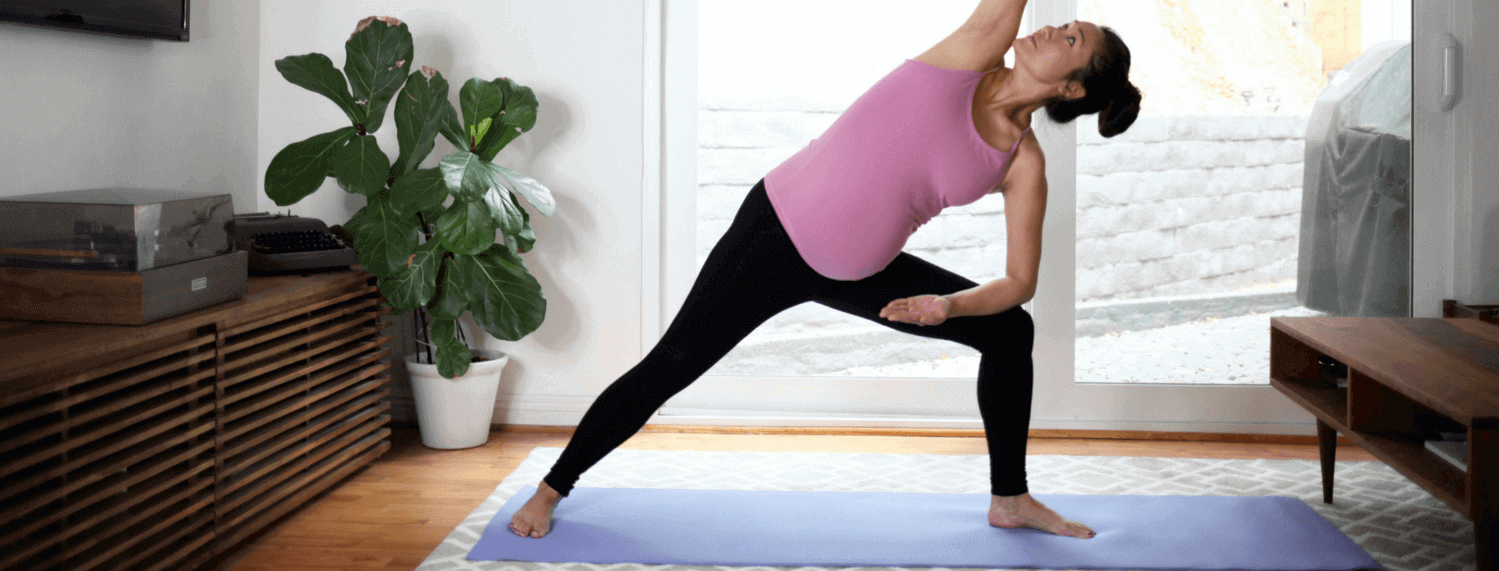
- September 30, 2020
- Comments: 0
- Posted by: Dr. Anushri Shah

Pregnancy is the turning point for many women, in this precious time a woman must be concerned about her health. In case if they do not take care at this moment, then it is adversely going to affect them at the further stages of life. It is been deprived according to a survey that to stay fit a pregnant woman can rely on prenatal yoga classes by keeping their eyes closed. Besides this there are two conditions on which a woman can’t refer to these classes, they are heart and back pain diseases. Having one of these two makes women uncomfortable by doing such exercises, also it is riskier for the fetus. Though, if a healthy woman follows prenatal yoga classes then it will provide several benefits like:
- Healthy sleep
- Reduction in stress and anxiety
- Reduction in various health issues like back pain, nausea, headache, and much more.
- Augmentation in strength, muscles: flexibility and endurance, etc.
Many of you might have got cleared with the terms, if not then have a look below at the prenatal yoga meaning.
Prenatal yoga: It is a multifaceted loom to exercise which works on heartening stretching, focused breathing, and mental centering. According to a suggestion in research, it is been said that “Prenatal yoga is the safest exercise that provides numerous reimbursement to pregnant women and their babies”.
Furthermore, the postures and exercises differ according to the varying trimesters. Let us discuss different poses and exercises with respect to the trimesters.
Prenatal yoga poses for 1st trimester
The first trimester includes 0-12 weeks of your pregnancy, and it is been noted that this trimester is much difficult for a woman to sustain as several hormones start changing, which brings uncertain pains in the body. Thus, to get rid of those pains and to have a good health startup so that you get prepared for the upcoming labor and pains, do follow the poses of prenatal yoga mentioned below.
Poorna Titli Asana
In this asana, you have to sit in a position where your legs are stretched out, bring your feet together by bending your knees, and try to pull your feet as close as you can to your body. Once getting into the position start bouncing your knees by applying normal pressure, continue the process for about 20-30 times. After that relax!
This posture will loosen your hip joint along with the increase in blood circulation at your pelvis. It helps in relieving stress and tiredness by making you feel open and relax.
Majari Asana
All you need to do is come on your knees and palm, like a cat, after that start moving your spine upward and downward. While going up inhale air, and in the same way while going down exhale. Do not push yourself to do extra.
One can achieve flexibility in the spine, neck, and shoulder. This pose is strictly restricted in the third trimester. There are several more poses named as Kantha Sanchalan, Ardha Baddha Konasana, etc.
Prenatal yoga poses for 2nd trimester
According to a survey, the second trimester of pregnancy is much easier than the first trimester. Hence, a woman can perform many poses including the poses of the first trimester also. But two main poses which a woman must do are:
Vrajasan
Have a seat and kneel down on the floor. After that bring your heels together and separate them in a way that they touch the hips respectively. Now stretch up your hands and make sure your back should head straight. Now inhale and exhale slowly for 5-10 minutes, Relax!
Doing this posture impulse the maximum flow in the pelvis region, it enhances your digestive system, and strengthens thigh muscles which help you in assisting your labor in the last trimester.
Adho Mukha Svanasana
This pose is much similar to a downward-facing dog. All you need to do is, straighten your knees and elbows in a manner that your body forms up a V-shape. Start inhaling and exhaling naturally in the same pose. Continue the exercise for 10-15 minutes and then relax!
It benefits you in booting up your muscles, digestion, respiration, and mental clarity. Furthermore, you can exercise first trimester asana’s also.
Prenatal yoga poses for 3rd trimester
As it is the final trimester the labor weight is increased a lot. Thus, many exercises need to be avoided. They are:
- Jogging, Jumping, Running, etc.
- Asana’s including low impact exercises must be avoided
- Bodyweight and toning asanas should also be avoided
Hence, you can say that exercises including high risk in body movements must be avoided. Only normal stretching and breathing asanas can be done, like savasana, ankle rotation, and Urdhva Hastasana.
Urdhva Hastasana
The most simple asana one can ever do. All you need to is go in front of the sun and stand straight over there with your hands raised upwards. Keep on breathing as long as you can do.
Benefits: Makes you tension free. Enhances your breathing capacity which directly results in better growth of the newborn. A good supply of oxygen is provided to the whole body especially the brain.
Savasana
Savasana is an asana where you lay down your body straight in a sleeping position. It is said that this asana is included in the relaxing pose done after every asana.
Benefits: Cools down your nervous system, digestive system, maintains blood pressure, reduces headaches, promotes awakening, and much more.
Special safety guidelines for prenatal yoga
As we discussed earlier there are some restrictions regarding prenatal yoga, let us discuss it.
Avoid certain postures
According to trimester, you have to be concise about the pose you are performing. Especially while doing a hip or back exercise. Also lying on your belly is totally restricted, as it can affect the physical growth of the fetus.
Don’t overdo
Perform the exercises which are possible for you to do. Don’t look at an exercise which you cannot do. Restrict yourself accordingly.
- Stay cool and hydrated
- Talk to your health care provider before performing any pose.
For having a safe pregnancy there are certain things that should be taken care of by pregnant women.

